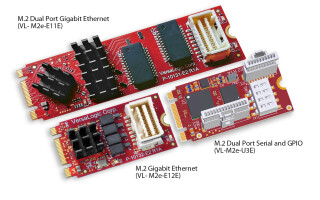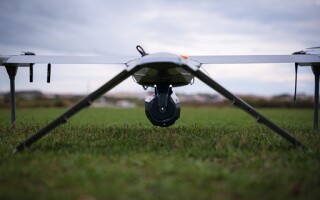Avionics and standards
StoryMarch 06, 2019
Standards and open architectures are driving modern avionics systems, be they military or commercial. They range from safety certification standards to standard form factors to conformance with commonality initiatives such as the Future Airborne Capability Environment (FACE), which enables software commonality across aircraft platforms through common application programming interfaces (APIs).
Marc Ayala, director of Fixed Wing Business Development for Collins Aerospace (Cedar Rapids, Iowa) says in our Avionics Issue’s Special Report that open systems standards such as FACE and others “are causing many within the industry to rethink investments and business models on the military. As an example, Collins Aerospace recently debuted a software-based FACE-compliant flight management system that can be loaded and run on any conforming processor. It wouldn’t have been possible without the common interfaces established by FACE.”
Harris Corp., which is providing an avionics upgrade for the F-35, also considers FACE when designing its systems. “We are designing our avionics software systems to be aligned with HOST [Hardware Open Systems Technologies] and FACE with a foundation based on FACE, while not exactly compliant to FACE at this time,” Bryant Henson, vice president and general manager for Harris Corp.’s Electronic Systems Avionics Business Unit (Melbourne, Florida) told me when I interviewed him for this month’s Special Report. “One area that is conformant to FACE is the FliteScene digital moving map used by the Army, Navy, Marine Corps, Air Force, and Coast Guard on a variety of rotary aircraft. Regarding FACE, we’re an active participant in FACE and continue to bring ideas back to the committees.”
Collins Aerospace and Harris are both active in the FACE consortium (run by the Open Group – www.opengroup.org/face). In fact, the roots of FACE can be traced back to the old Common Avionics Architecture System (CAAS) program originally developed by Collins Aerospace for the Army’s Special Operations MH-47 and MH-60 helicopter fleets. It continues today on helicopter platforms in the U.S. and internationally.
CAAS uses common hardware components to lower life cycle costs and enable more cost-effective upgrades. FACE does this through software. Both initiatives are effective because what they do – enabling commonality and reuse across multiple platforms through standard interfaces – makes economic sense.
Sound familiar? It should if you regularly read this column, because that’s also how I’ve described other similar initiatives such as SOSA, HOST, Modular Open Radio Frequency (RF) Architecture (MORA), etc. These efforts have momentum because they solve a long-term cost challenge for the Department of Defense and enable timely tech refreshes for electronics platforms – in short, they get warfighters better gear fast enough to make a difference.
Also fueling that momentum is the buy-in across the services – Air Force, Army, and Navy – to the efforts. And … as promised, this month we have the first installment of an article detailing that tri-service push: “Development of the next-generation OpenVPX-based embedded system standard: A tri-service convergence of approaches: Part 1 of 3.” The authors are Mike Hackert of the U.S. Navy’s Naval Air Systems Command (NAVAIR), the Navy lead for SOSA; and his fellow leads at the Air Force (Dr. Ilya Lipkin, Air Force Life Cycle Management Center [AFLMC]) and the Army (Ben Peddicord, Communications-Electronics Research, Development and Engineering Center [CERDEC]).
The article takes us in-depth on the tri-service convergence on a common open architecture through programs such as the Sensor Open Systems Architecture (SOSA), MORA, HOST, VICTORY, etc. and how SOSA has become the umbrella under which they all will operate. “The foci of development for each of these programs has become the SOSA Consortium, which is maintained by The Open Group,” they write. “The end-user community can thus come together and agree upon requirements for their particular applications.”
The concept of reuse in software also affects safety certification standards. Now, although military aircraft are not required to abide by Federal Aviation Administration certification standards such as DO-178 and DO-254, they often do per customer requirements.
“Military avionics customers have their own certification requirements and authorities,” says Gary Gilliland, technical marketing manager for DDC-I Inc. (Phoenix, Arizona) in our Mil Tech Trends article. “These requirements have not typically been as rigorous as DO-178C processes but are converging rapidly. Additionally, there is a strong push for reuse of software across military organizations utilizing the architectures such as defined by the FACE standard. Commercial customers are only concerned about reuse within their own organization.”
Reuse, certification, and satellite navigation for commercial aircraft will also be topics of discussion at Aerospace Tech Week (the show was formerly called Aviation Electronics Europe), held mid-March in Munich, Germany. Full disclosure: I serve on the advisory committee for the event, and MES partners with them on our Avionics Design e-newsletter. For more information, visit www.aerospacetechweek.com.





